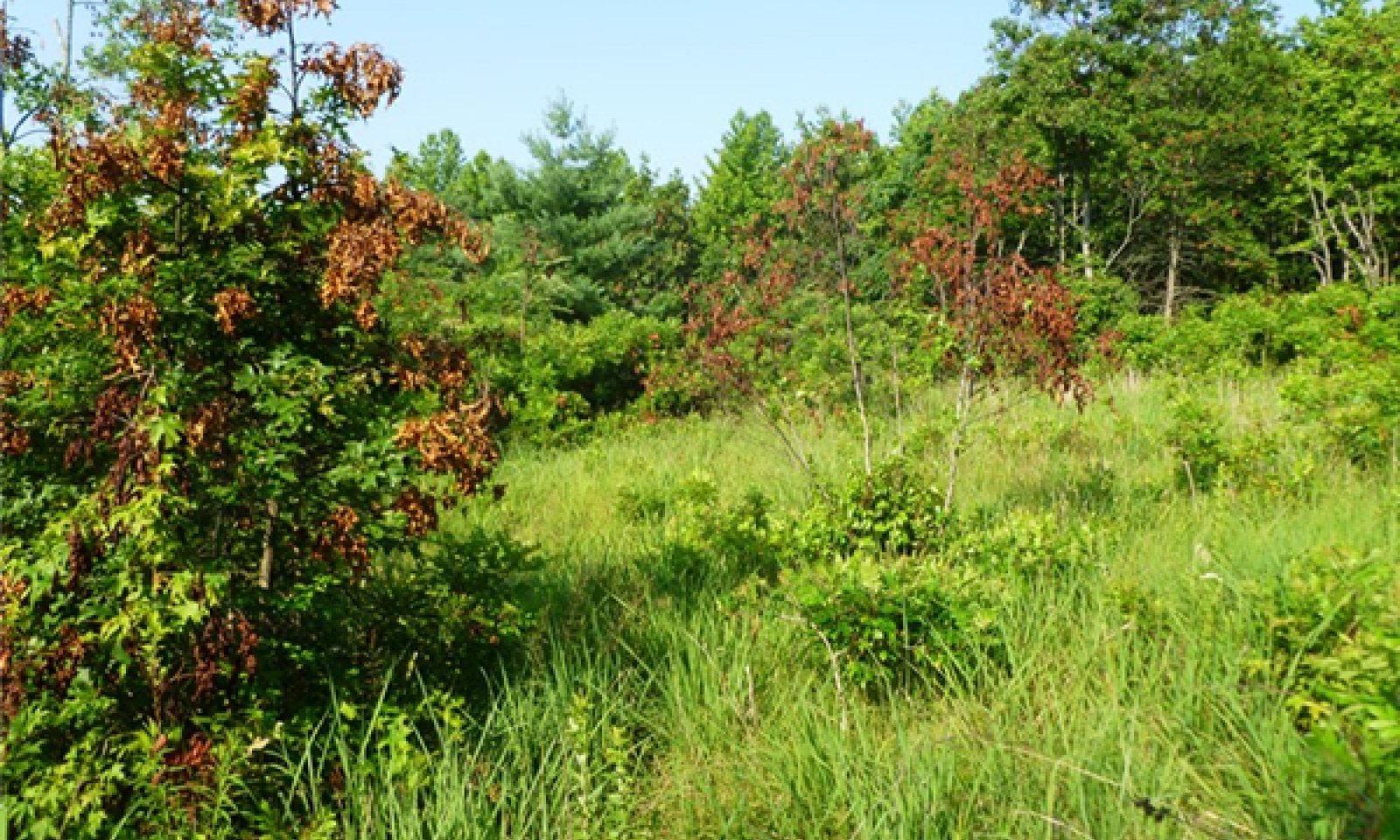
Serpentine Till Uplands
Scenario model
Current ecosystem state
Select a state
Management practices/drivers
Select a transition or restoration pathway
- Transition T1A More details
- Transition T1B More details
- Restoration pathway R2A More details
- Transition T2A More details
- Transition T3A More details
-
No transition or restoration pathway between the selected states has been described
Target ecosystem state
Select a state
State 1
Reference State







Description
The reference state for the glaciated serpentine uplands is a mosaic of physiognomically different phases, consisting of grasslands and or meadow dominated by little bluestem (Schizachyrium scoparium) and Indiangrass (Sorghastrum nutans), to predominately shrublands supporting a mix of winged sumac (Rhus copallinum var. latifolia), and northern bayberry (Morella pensylvanica), to serpentine woodlands dominated by a mix of oaks (Quercus spp.), tuliptree (Liriodendron tulipifera), and sweetgum (Liquidambar styraciflua). What ties these vegetation forms together in the reference state is, that given time and lacking management, natural processes alone, such as wildfire or lack of wildfire, ice storms, and wind storms can, potentially, effect the development of the transitions between all of the three structural phases described and any intermediate stages. The defining characteristic of the reference state is the dominance of native plants, at least in the uppermost defining stratum, and the presence of serpentine soil development. These criteria separate the reference state from the invasive plant state and the excavated barren state.
Historically, a similar mosaic of these types was also likely, a mosaic that was reinforced by the patchy occurrences of serpentine soils on Staten Island. Serpentine grasslands may have dominated as the modal plant community resulting from Native American fires that occurred at least every few years as has been reported (Day, 1953) and resulting from clearing and pasturing practices by early colonists (Leng and Davis, 1930 as cited in Robinson et al., 1994).
Currently, the serpentine grassland plant community-type phase is a conservation focus for the management of rare and endangered plant species (NY Natural Heritage Program, 2013).
Collecting biomass, tree cores, or vouchers was not allowed on these conservation lands.
Submodel
State 2
Invasive Plants State
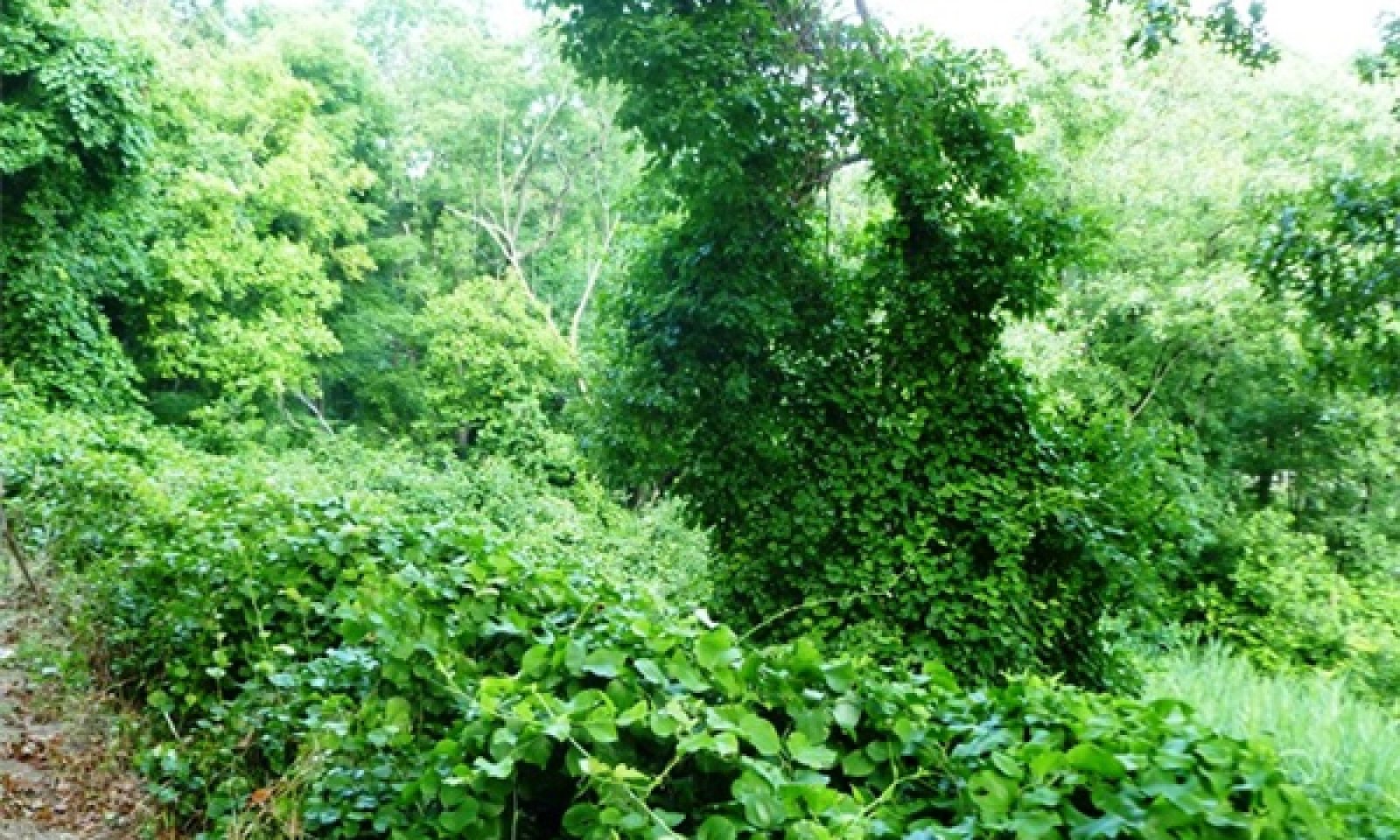

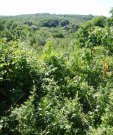
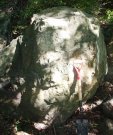

Description
The presence and dominance of non-native, invasive plant species can be pervasive in certain serpentine areas on Staten Island (Robinson et al., 1994), thereby warranting separate states, especially if active management is necessary to restore the native serpentine vegetation. Invasive species are a potential problem given the small isolated nature of the serpentine uplands and the close proximity to sources of invasive plant seeds and propagules from nearby urban and residential areas.
The Invasive Plants State for the glaciated serpentine uplands is a mosaic of physiognomically different phases, ranging from grasslands or meadows dominated by common wormwood (Artemisia vulgaris) to predominately shrublands supporting a mix of honeysuckles (Lonicera spp.), Oriental bittersweet (Celastrus occidentalis) and common wormwood (Artemisia vulgaris) and woodlands or forest dominated by black locust (Robinia pseudoacacia) and tree of heaven (Ailanthus altissima). Successful invasive plant control at any physiognomic phase can restore the serpentine site back to the native flora of the reference state.
Given time and the lack of disturbance or active management, grasslands or meadows can succeed to woody phases as shrubland and woodland or forest phases. Natural processes alone, such as wildfire or lack of wildfire, ice storms, and windstorms, can reduce the dominating overstory structure, driving the vegetation development back to more open phases.
Submodel
State 3
Excavated Barrens State

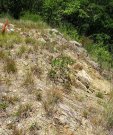

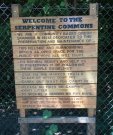
Description
The serpentine barrens at Staten Island exist only as localized, highly modified sites created by excavation and topsoil removal or deposition of excavated spoils. However, due to the strong serpentine influence, open barrens sites are also of significant conservation focus by efforts to protect rare species (NYNHP 2013). Furthermore, the poor nature of the soils may limit the incidence of invasive species.
Submodel
Mechanism
Invasive species can eventually dominate and displace many native species. Due to the close proximity of urban and dense residential environments, the serpentine sites on Staten Island are subject to many disturbances like excessive trampling and dumping that would facilitate the invasion and establishment of invasive species.
Mechanism
Land clearing on a localized scale removes all vegetation and topsoil and creates an artificial “barrens ” of exposed serpentinite bedrock and rubble. Localized deposition of excavated serpentine spoils similarly creates an artificial “barrens .” With the resident serpentine seed bank striped away or at least severely diminished, few plants get established and are typically scattered. (This situation is not common).
Mechanism
All invasive plants are selectively removed by any single or combination of management practices such as cutting, pulling, and selective herbicide. Additional seed sowing or native planting is done to achieve the desired serpentine grassland phase.
Relevant conservation practices
| Practice | External resources |
|---|---|
|
Brush Management |
|
|
Prescribed Burning |
|
|
Restoration and Management of Rare and Declining Habitats |
|
|
Upland Wildlife Habitat Management |
|
|
Record Keeping |
|
|
Invasive Plant Species Control |
|
|
Herbaceous Weed Control |
Mechanism
Land clearing on a localized scale removes all vegetation and topsoil and creates an artificial “barrens” of exposed serpentinite bedrock and rubble. Localized deposition of excavated serpentine spoils similarly creates an artificial “barrens.” With the resident serpentine seedbank stripped away or at least severely diminished, few plants get established and are typically scattered. (This situation is not common).
Mechanism
If desired, physical soil establishment can be achieved with serpentine parent material and soil amendments (O’Dell and claassen 2009). Additional seed sowing and/or native planting is done to achieve the desired species composition. (This situation is rare.)
Model keys
Briefcase
Add ecological sites and Major Land Resource Areas to your briefcase by clicking on the briefcase (![]() ) icon wherever it occurs. Drag and drop items to reorder. Cookies are used to store briefcase items between browsing sessions. Because of this, the number of items that can be added to your briefcase is limited, and briefcase items added on one device and browser cannot be accessed from another device or browser. Users who do not wish to place cookies on their devices should not use the briefcase tool. Briefcase cookies serve no other purpose than described here and are deleted whenever browsing history is cleared.
) icon wherever it occurs. Drag and drop items to reorder. Cookies are used to store briefcase items between browsing sessions. Because of this, the number of items that can be added to your briefcase is limited, and briefcase items added on one device and browser cannot be accessed from another device or browser. Users who do not wish to place cookies on their devices should not use the briefcase tool. Briefcase cookies serve no other purpose than described here and are deleted whenever browsing history is cleared.
Ecological sites
Major Land Resource Areas
The Ecosystem Dynamics Interpretive Tool is an information system framework developed by the USDA-ARS Jornada Experimental Range, USDA Natural Resources Conservation Service, and New Mexico State University.


